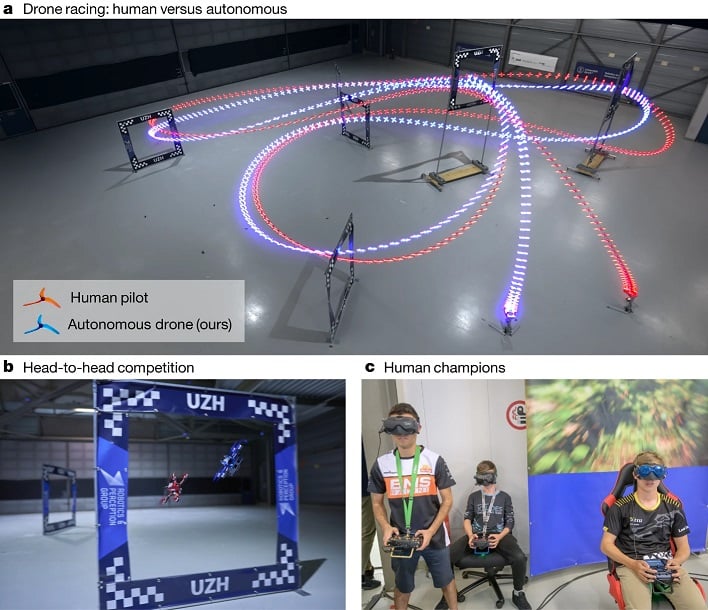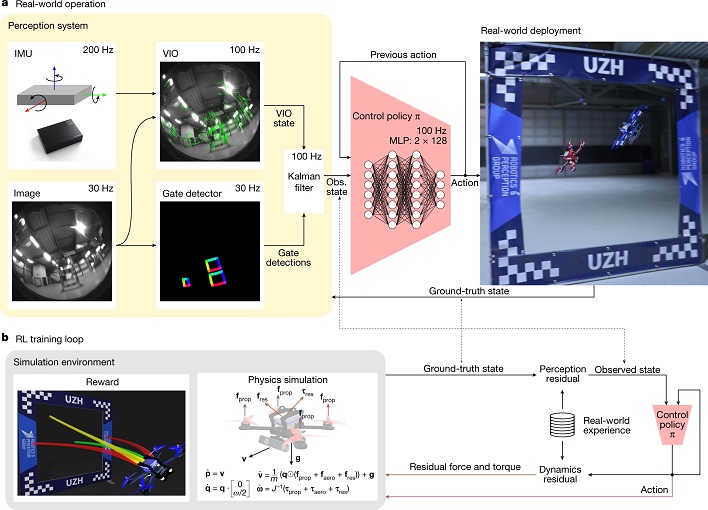An AI Drone Pilot Just Smoked Three Top Human Drone Racing Champs

AI-enabled devices defeating human counterparts is not something new. IBM's Deep Blue won a chess match against Gary Kasparov all the way back in 1996, and Google's AlphaGo took the win against champion Lee Sodel at Go in 2016. However, many were not expecting an AI-piloted drone to defeat some of the top human AI drone racers at this point in its development. The AI-piloted drone, in fact, won multiple races against three world-champion drone racers in first-person view (FPV).
"Physical sports are more challenging for AI because they are less predictable than board or video games," explained Davide Scaramuzza, head of the Robotics and Perception Group at the University of Zurich, and drone racing team captain. He continued, "We don't have a perfect knowledge of the drone and environmental models, so the AI needs to learn them by interacting with the physical world."

The Swift system is comprised of two key modules. The first is a perception system that "translates visual and inertial information into a low-dimensional state observation," while the second is a control policy "that maps this state observation to control commands," according to a paper published in the journal Nature by the group of researchers from the University of Zurich.
Swift differs from previous AI-piloted models in that it reacts in real time to the data collected by an onboard camera. The earlier models were reliant upon an external position-tracking system to precisely control their trajectories. Swift's integrated inertial measurement unit measures acceleration and speed as its artificial neural network utilizes data from the camera in order to localize the drone in space while detecting gates placed along the racetrack. All of this data is "fed into a control unit," which is also based on a deep neural network that makes split-second decisions on how to finish the race as quickly as possible.
While the AI-piloted drone wins were spectacular, the researchers also point out that even though Swift achieved the fastest lap a half-second faster than its human counterparts, human pilots are still more adaptable when track conditions are different from those the AI was trained on.
Scaramuzza pointed out that being drones are limited to whatever battery capacity they have onboard, being able to make them fly faster increases their utility. Flying faster is a huge bonus for applications like forest monitoring, space exploration, the film industry, and rescue drones. This makes what the researchers are doing with AI-piloted drones far more important than simply putting humans in their place, the backseat.


